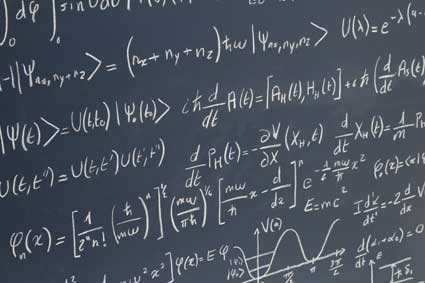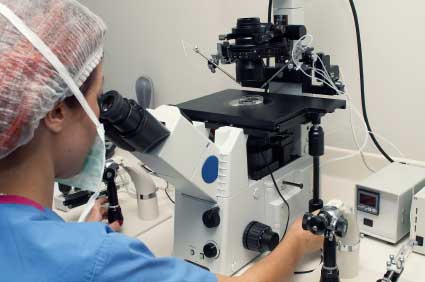While physics attempts to describe the rules as they apply to movement and matter, quantum physics tries to explain the behavior of the smallest particles and how they move. Such particles include things such as electrons, protons, and neutrons.
A. Quantum Physics. In Minute' Detail
With its focus on microscopic particles, quantum physics describes the particles that makeup the already minute' particles. Early in the 20th century, the laws governing macroscopic objects were found to be inaccurate when setting precedents for smaller realms. The word "quantam" originates from the Latin term meaning "how much." It is used in the world of physics to refer to the miniscule units of matter and energy whose behavior is forecasted by and observed in quantum physics.
Notably, even the conditions that appear solidly and continuously, for example, space and time possess values, albeit they tend to be of the smallest degree.
The quantum model of the atom is much more complex than we had previously learned. Electrons, instead of orbiting the nucleus like planets, orbit in less defined, blurred, or cloud-like formations. Also, the definitive configurations we learned through the electron series (citing the numbers of electrons in each given outer shell) are actually more like probabilities than hard and fast formations.
We bring this up when discussing the quantum nature of light to define the term quantum physics so that you understand that its purpose is to show the statistical probability of the electron's location at any given moment. Therefore when the term is combined with "the nature of light," you will have a firm grasp on the general working concept.
B. Singular to Quantum Physics
Unique to quantum physics is the idea that observing something can actually influence the physical processes that are taking place. For instance, in what is known as wave particle duality, light waves act like particles and those particles also act like waves. Said another way, light has properties of both particles and waves, and the behavior of light can be explained by either theory.
In quantum tunneling, matter has the ability to move from one location to another without moving through the shared space. This gives way to the modern day application where information is able to instantly travel across extreme distances. In fact, it is through quantum mechanics that we discover that much of the universe can actually be described as a series of probabilities.
In quantum physics, there is a range of different disciplines. The one that focuses specifically on the behavior of light (photons) is known as Quantum Optics. When studying Quantum Optics, you will find the activity patterns of individual photons (light beams) have direct impact upon the outgoing light. The highly specialized and useful device known as the LASER is only one of the many invaluable byproducts of Quantum Optics.
This is in contrast with the more traditional study of light, Classical Optics, developed by Sir Isaac Newton, where light was studied as if it had only particle properties, meaning that it moved in a straight line, rebounded off objects with which it came into contact, and passed through objects that provided minimal resistance.
C. Photons
To better understand what is referred to when the term photon is used, let us turn our attention to the Photon Theory of Light. In this specific context, a photon is a discrete bundle (or quantum) of electromagnetic (or light) energy.
c = 2.998 x 108 m/s.
Based upon the Photon Theory of Light, the photons central characteristics include the following:
- They maintain movement at a constant velocity, c = 2.9979 x 108 m/s (the speed of light) in free space.
- They are known to possess zero mass and zero rest energy.
- They carry energy and momentum, which correlate with the frequency nu (n), and wavelength lamdba (l), (and p, the momentum) of the electromagnetic wave by E = hn and p = h/l.
- They have the potential of being destroyed or created when radiation is absorbed or emitted.
- They have the ability to have particle-like interactions, for instance, collisions with electrons and other minute' fragments.
D. Quantum Optics. Basic Understanding
To better understand the quantum properties of light, it may be helpful to apply some of the associated processes (absorption, emission, and stimulated emission) to the Laser, since this is one of the most well established applications of quantum optics. For the most part, these same three traits, in varying degrees, can be applied to additional forms of light.
Electronic transitions are commonly, the types of transitions that emit or absorb visible light. To envision how these work, simply envision an electron jumping between quantized atomic energy levels.
For a Laser to effectively function, it critically needs to have a stimulated emission of light. The stimulated emission of light serves to provide the amplification necessary to properly conduct imaging work.
The unique property known as coherence arises as a result of a stimulated emission process. A common stimulus triggers the emission events, which are responsible for providing the amplified light. This aligns the emitted photons in the ideal step formation where each photon has a definitive phase relation to one another.
This type of coherence (relational alignment) is described in two specific terms, temporal coherence and spatial coherence. Both of these prove to be highly important in producing the interference used to produce holograms.
Note: Ordinary light is not coherent for it originates from independent atoms which emit on time scales of about 10-8 seconds. Though some degree of coherence may exist in select sources, such as mercury green line and a sprinkling of other useful spectral sources, their coherence is not nearly that of which is contained in a Laser.
Laser Light include:
1. Coherence. This is the property whereby different parts of the laser beam are related to each other in a phase relationship. When maintained over a long enough period of time, interference effects can be seen or recorded photographically. The coherence property is the factor that makes the idea of holograms possible.
2. Monochromatic. Essentially, consisting of one wavelength, Laser light originates from the stimulated emission of one set of atomic energy levels.
E. Photons and Probability
There are two ways in which probability can be applied to the behavior of photons: probability can be used to calculate the probable number of photons in a particular state, or probability can be used to calculate the likelihood of a single photon to be in a particular state.
Because the former interpretation goes against Newton's Concept of Energy Conservation, the latter interpretation is thereby the more viable option.
Following up on physicist Thomas Young's work during the 1800s with the double-slit experiment (see Chapter XIX), Paul Dirac (1902-1984), a British theoretical physicist and one of the principle founders of quantum physics, explains this premise in his modified version:
Even before the discovery of quantum mechanics, people were aware that a connection between light waves and photons needed to be of a statistical character. However, what they were not fully certain of was that the wave function gives information about the probability of one photon in a fixed position as opposed to the total probable number of photons in that one location.
This is an important distinction and it can be clarified in the following way. Suppose we have a beam of light comprised of a great many photons divided into two parts of equal intensity. Assuming that the beam is connected with the probable number of photons, half of the total number of photons should be going into each component. When the components are made to interfere, one photon in one component should be disturbing one in the other.
Under the old theory, the two photons would either have to cancel one another or produce four photons. Either result would contradict the Conservation of Energy Theory.




























